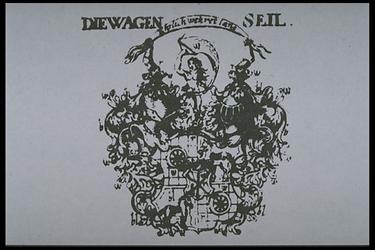Viennese Classic - Early Period#
Georg Christoph Wagenseil: Divertimento C major, op.1 Nr. 2#
Georg Christoph Wagenseil (1715 - Vienna - 1777) studied with J. J. Fux among others. He documented as early as 1735 as a court scholar, then became the organist of the widowed Empress and after 1745 served as the piano teacher to the archdukes and archduchesses. His style attempted to combine the movements of his time: rationalism and sentimentality. Like many composers of his day, Wagenseil the keys like C major (Musical example) which Mattheson described as rund und frech, freudig, charmant (round and cheeky, happy, charming); F major: capable die schoensten Sentiments der Welt zu exprimieren (capable of expressing the most beautiful sentiments in the world); and A major: brillierend, mehr klagend (shimmering, more plaintive).
The illustration shows Wagenseil's seal which he used on his will. He borrowed it from his brother Ignaz, who had appropriated it from a family of the same name from Augsburg - a common practice in those days. (E. Stadler)
Sound clip#
© Konstanze Hubmann, Graz (Hammerklavier) (Aufnahme: GM-Tonstudio-Musikverlag Dr. Werner Jauk, Graz)
